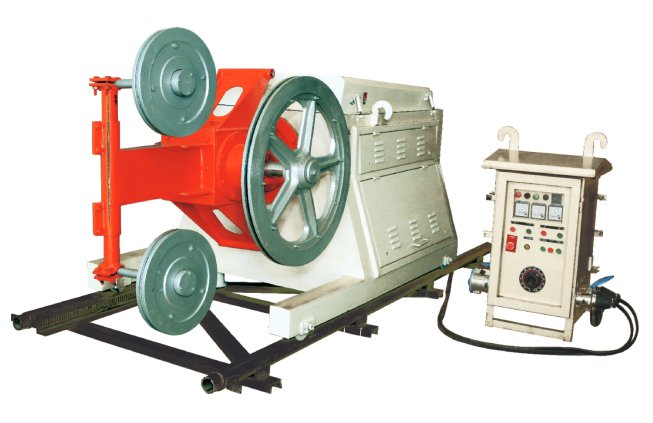In the ever-evolving world of technology and machinery, the wire saw machine has emerged as a game-changer in the field of precision cutting. This innovative tool has simplified the process of cutting various materials with unparalleled accuracy. In this article, we will delve into the intricacies of wire saw machines, exploring their functionality, applications, and the impact they have had on industries that rely on precise cutting.
Understanding the Basics
A wire saw machine operates on a simple yet effective principle: a wire, typically embedded with abrasive particles, is used to cut through materials with precision. The wire is tensioned and guided through the material, creating a clean and accurate cut. This method is especially advantageous when dealing with materials that are hard or difficult to machine using traditional cutting tools.
Applications Across Industries
One of the key reasons behind the growing popularity of wire saw machines is their versatility. These machines find applications in various industries, ranging from construction to manufacturing. Let’s explore some of the notable uses:
- Construction Industry: Wire saw machines are extensively used in the construction sector for cutting concrete and other construction materials. Their ability to make precise cuts allows for efficient shaping and sizing of construction elements.
- Stone Processing: In the world of stone processing, precision is paramount. Wire saw machines have become indispensable for cutting and shaping stones like marble and granite. The clean cuts achieved by these machines enhance the quality of the finished products.
- Metal Fabrication: Wire saw machines have found a niche in metal fabrication, where intricate cuts are often required. Whether it’s for creating specialized parts or cutting through thick metal sheets, these machines offer a level of precision that traditional tools struggle to match.
- Electronics Manufacturing: The electronics industry demands precision at a microscopic level. Wire saw machines, with their ability to make fine cuts, are employed in the manufacturing of electronic components, ensuring accuracy in the production process.
Key Features that Set Wire Saw Machines Apart
- Precision Cutting: The primary advantage of wire saw machines is their unparalleled precision. The fine wire and advanced control systems allow for cuts with minimal material wastage.
- Versatility: From cutting through hard stones to intricate metal designs, wire saw machines showcase remarkable versatility. They can adapt to different materials and cutting requirements.
- Efficiency: These machines operate efficiently, reducing the time required for cutting tasks. This efficiency translates into cost savings for businesses, making wire saw machines a cost-effective choice in the long run.
- Reduced Maintenance: Compared to some traditional cutting tools, wire saw machines often require less maintenance. This makes them a reliable and practical investment for businesses looking to streamline their operations.
Challenges and Innovations
While wire saw machines have revolutionized precision cutting, it’s crucial to acknowledge the challenges they face. The wear and tear of the cutting wire, for instance, can impact the quality of cuts over time. However, continuous innovations in materials and design are addressing these challenges. Advanced materials for the cutting wire and improved tensioning systems are enhancing the durability and performance of wire saw machines.
Looking to the Future
As technology continues to advance, we can expect further refinements in wire saw machine design and capabilities. The integration of smart technologies, such as artificial intelligence for real-time adjustments during cutting processes, holds the promise of even greater efficiency and precision.
In conclusion, the wire saw machine has emerged as a vital tool for industries that demand precision cutting. Its simplicity, coupled with advanced features, has made it a preferred choice in various applications. As technology continues to evolve, we can anticipate further advancements that will shape the future of precision cutting, making it even more accessible and efficient for a wide range of industries.



